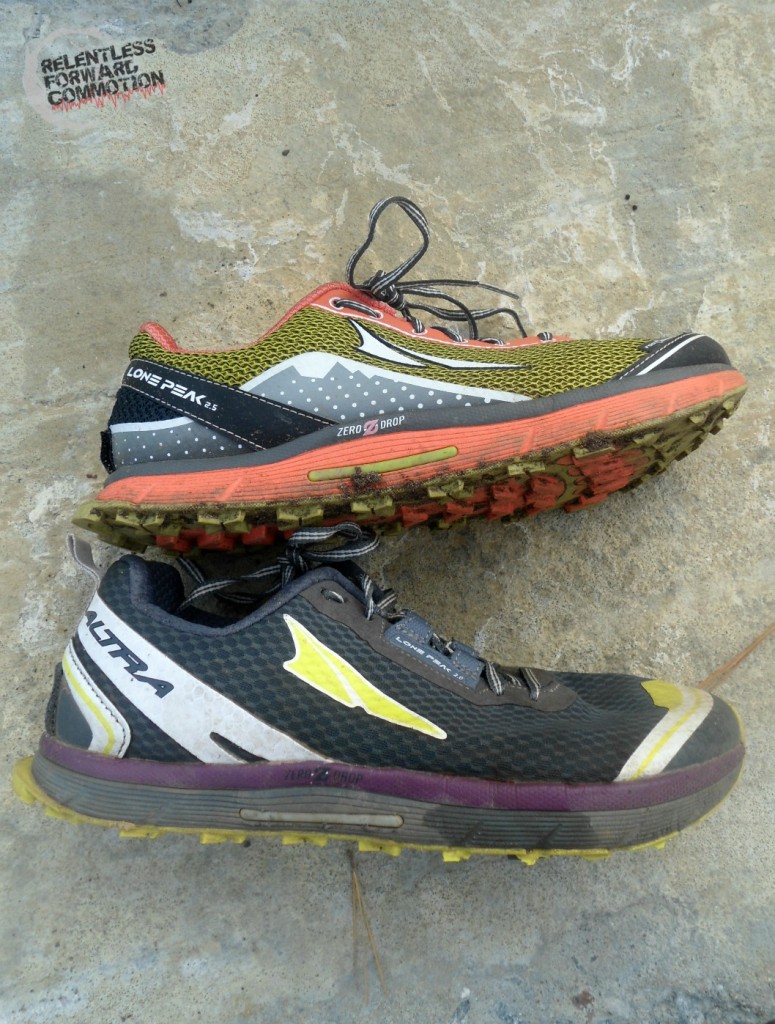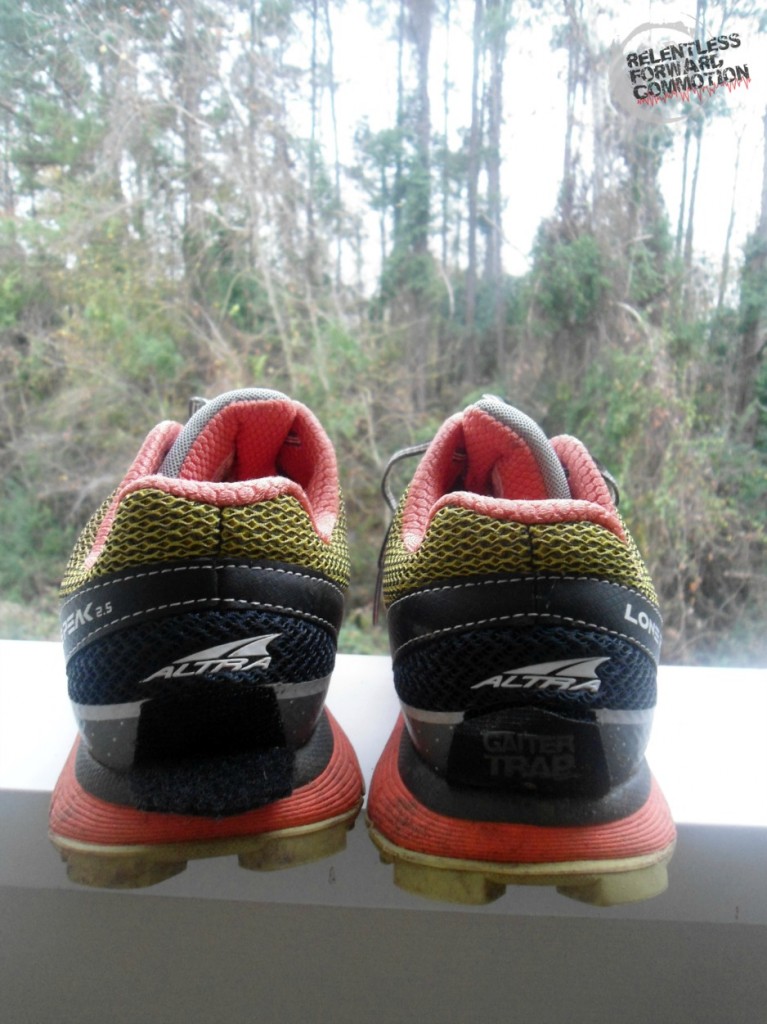Last Updated on September 27, 2019 by Heather Hart, ACSM EP, CSCS
Hey look, it’s another shoe review of a shoe that has already been on the market for nearly a year! Forgive me, my fine readers, for being way behind on this one. But I’ve had a lot of people ask how I like my upgrade to Altra Lone Peak 2.5’s, so I figured I’d tell you.
Earlier this year, after numerous back and forth Facebook messages with an Altra wearing friend (thank you, Chris B.), and what felt like hours slaving over online reviews trying to decide between the Altra Lone Peak 2.0‘s and the Altra Superiors (a lighter, less cushioned trail shoe), I finally clicked the “add to cart” button on the Lone Peak 2.0’s and made my purchase.
It was one I would not regret.
I really loved my Lone Peak 2.0’s (You can read my review here). A lot of the online reviews I read said the 2.0 model fell short compared to the previous versions of the Lone Peak. But having never experienced those previous models, I could not deny or confirm those experiences. All I knew was that I really liked the 2.0’s.
And then I got the 2.5’s.
It’s funny how you cannot pinpoint a feature you didn’t know you disliked about a shoe, until the updated model shows you how much BETTER that shoe can be. And that is exactly what has happened with my Lone Peaks.
In typical fashion, the shoe arrived at my door step, I put in one or two short runs in them (for a total of maybe 7 miles max), and then I raced in them. 54 miles at once, to be exact. While this is never the technique I would recommend, both for shoe reviewing or racing, there certainly is no better way to find out if you love, or utterly hate, a new shoe quite like spending your ENTIRE day running in them.
And the Lone Peak 2.5’s? Well I love them.
SPECS:
- Weight: 9.2 oz. (According to my 2.0 review, that makes this pair 0.7 ounces heavier than the LP 2.0)
- Cushioning: Moderate
- Ideal Uses: Trail Running, Hiking, Fastpacking, Trail Racing
- Designed To Improve: Wet & Hot Feet, Toe Splay, Traction, Stability, Comfort Running Form, Speed
- Platform: FootShape™ Toe Box with Fully Cushioned Zero Drop™ Platform
- Stack Height: 25 mm
- Midsole: Dual Layer EVA with A-Bound™ Top Layer
- Outsole: Sticky-Rubber TrailClaw™
- Insole: 5 mm Contour Footbed
- Upper: Quick-Dry Trail Mesh
- Other Features: StoneGuard™ Rock Protection, Trail Rudder, Gaiter Trap™ Attachment
- MSRP: $120

Top: Lone Peak 2.5 Bottom: Lone Peak 2.0. While it doesn’t affect performance, I’ll admit I prefer the new design with the mountain over the previous model.
WHATS NEW:
- Redesigned Upper
- Improved Lacing System
- Improved Upper Durability
- Slightly Firmer Midsole
Now, here’s the interesting part to me. Altra claims there is a slightly firmer midsole in the 2.5 compared to the 2.0, but if I had to pick one noticeable difference between the 2.0 and 2.5, its’ the 2.5 feels more comfortable to me, andLESS stiff/firm. Which counters the fact that Altra says the 2.5 is slightly firmer in the midsole. So take that for what it’s worth: simply my opinion.
As far as the upper durability and redesign, well to be honest I never had an issue with the old design.
THE FIT:
Altra, if you haven’t heard, is known for their natural fit and wide toebox. (You can learn more about Altra’s and their shoe concept HERE.) Both allow your foot and toes to splay naturally, almost as if you were running barefoot. Sure, they sort of look like clown shoes (people ask me all of the time at the gym, “what ARE those shoes on your feet” when I’m wearing my Torins.) But the trade off is that you don’t end up with blisters and/or black and blue toenails, like so many runners experience in other shoes. In fact, as mentioned in my last race recap, my left foot started to swell after a fall. I could FEEL my toes getting puffier and the toebox getting slightly tighter, yet I still wound up with absolutely zero blisters or even hot spots after 50+ miles. That would not have been the case in a standard toebox.
Now, if you’ve read any of my other shoe reviews, you know that I have narrow, albeit big, feet. The Lone Peak 2.5’s are indeed wide, so I just barely made the cut…as you can see in this picture the eyelets are getting pretty darn close in order to hug my feet tightly. So, this is great news for those of you with normal to wide feet: they’ll fit perfectly.
As with the Lone Peak 2.0, I sized up half a size from my standard shoe. I typically wear a size 10 running shoe, but went with a 10.5 in the Lone Peak 2.5. They seem to run small in length.
THINGS I STILL LOVE:
The gaiter trap. What a kickass concept. No need to add Velcro to your sneakers to hold down gaiters…it’s already there.
The sole/tread. Serious grip for all terrain surfaces. I’ve yet to slip in these shoes.
The Run. What can I say, I love it. Another shoe where I don’t even think twice about it while I’m running, which is the ultimate sign of “this shoe works” in my book. I suppose the only semi-complaint (it’s really not even a complaint) is that the Lone Peak 2.5 is heavy, compared to a lot of other shoes on the market. It’s not so heavy that it is bothersome or noticeable, but they are heavier. However, I have to say after the Paris Mountain 50K where I stubbed my toes about 50 times (no exaggeration) yet still walked away with zero injuries or even bruised toenails, I was thankful that the Lone Peak’s were heavier and more durable than other shoes. (That particular race I wore the 2.0’s, for what it’s worth.) They absolutely protected my feet.
So there you have it. Would I recommend this shoe? Absolutely, as of the last 6 months, it’s the only trail shoe I race in.
I unfortunately cannot comment on the upgrades of the shoe because I didn’t have any complaints regarding the Lone Peak 2.0’s. That said if you did have concerns, feel free to drop a comment below and I can try to answer based on my experiences so far with the 2.5’s.
Disclaimer: The Lone Peak 2.5’s were provided to me at no cost as a part of the 2015 Runner’s World Half & Festival Blog event. However, all opinions expressed, as always, are my own.
Heather Hart is an ACSM certified Exercise Physiologist, NSCA Certified Strength and Conditioning Specialist (CSCS), UESCA certified Ultrarunning Coach, RRCA certified Running Coach, co-founder of Hart Strength and Endurance Coaching, and creator of this site, Relentless Forward Commotion. She is a mom of two teen boys, and has been running and racing distances of 5K to 100+ miles for over a decade. Heather has been writing and encouraging others to find a love for fitness and movement since 2009.








Leave a Reply